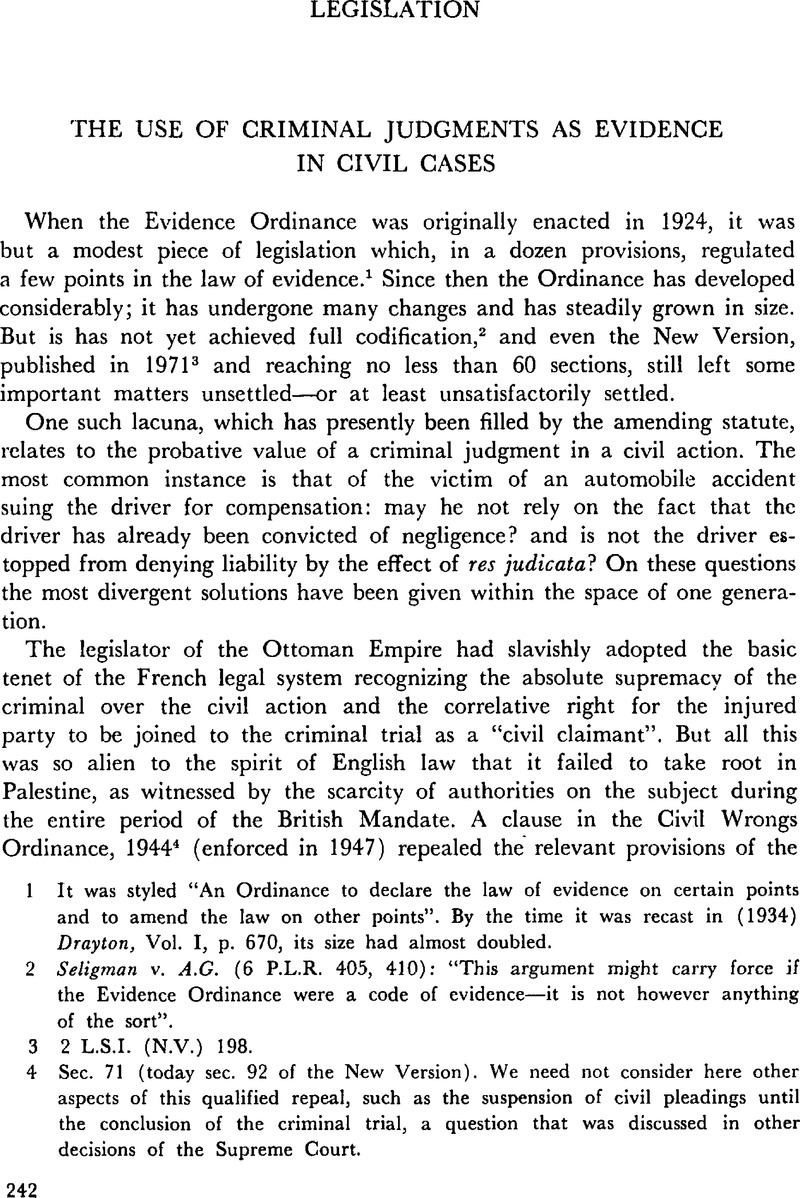Published online by Cambridge University Press: 12 February 2016

page 242 note 1 It was styled “An Ordinance to declare the law of evidence on certain points and to amend the law on other points”. By the time it was recast in (1934) Drayton, Vol. I, p. 670, its size had almost doubled.
page 242 note 2 Seligman v. A.G. (6 P.L.R. 405, 410): “This argument might carry force if the Evidence Ordinance were a code of evidence—it is not however anything of the sort”.
page 242 note 3 2 L.S.I. (N.V.) 198.
page 242 note 4 Sec. 71 (today sec. 92 of the New Version). We need not consider here other aspects of this qualified repeal, such as the suspension of civil pleadings until the conclusion of the criminal trial, a question that was discussed in other decisions of the Supreme Court.
page 243 note 5 Berakha v. Bekhar (1949) 2 P.D. 406.
page 243 note 6 Tennenholz v. Poplovitz (1954) 8 P.D. 1580.
page 243 note 7 Mainly Hollington v. Hawthorn [1943] 2 All E.R. 35.
page 243 note 8 (1967) (II) 21 P.D. 285, per Berinson J.
page 244 note 9 See in particular sec. 11 (1968 Law Reports, Statutes, vol. 2 at p. 1555).
page 244 note 10 Courts Law 1957, sec. 28 (4) (11 L.S.I. 163).
page 245 note 1 2 L.S.I. (N.V.) 198.
page 246 note 2 11 L.S.I. 157.
page 246 note 3 23 L.S.I. 76.